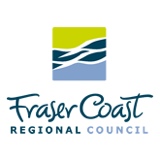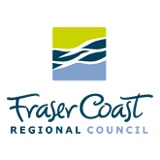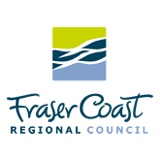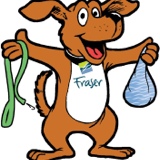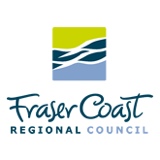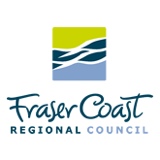Information
-
Audit Title
-
Document No.
-
Client / Site
-
Conducted on
-
Prepared by
-
Location
-
Personnel
OPERATOR AND BUSINESS DETAILS
-
Business Name
-
Business Address
-
Postal Address
-
Licence Number
-
Licence Holders Name
-
Operator on Site
AUDIT DETAILS
-
Audit time & date
-
Purpose of Audit
- Routine Inspection
- Reinspection
- Requested Search
- Complaint Investigation
- Enquiry
- Non-Approved
- Other
BUSINESS TYPE
-
Business Type
-
Service
- Body Piercing
- Implanting/Hair Beads
- Scarring
- Tattooing (inc. cosmetic)
COMPLIANCE DETAILS
Public Health (Infection Control for Personal Appearance Services) Act 2003 Applies to Higher Risk Personal Appearance Services
-
s.24 - Does the person carrying out the HR service hold appropriate qualifications?
-
s.41 - Is a copy of the license displayed?
-
s.41 - Are a copy of the Guidelines kept at the premises?
-
s.41 - Are fixtures, fittings and equipment maintained in good repair and operational order?
Queensland Developed Code, Part 15 Applies to all higher risk Personal Appearance Services (new premises from 1 July 2004, existing premises from 1 January 2015).
-
A1 - Does the premises have a designated area for storage of clean/sterilised items and a separate area for storage of contaminated items?
-
A2 - Does the premises have at least 1 hwb for each 5 workstations? (Dimensions not less than 400mm x 250mm; reticulated cold water; non-touch taps; easily accessible)
-
A2 - Does the premises have at least 1 sink for cleaning instruments? (Bowl not less than 400mm long; reticulated hot/cold water; located 800-1000mm above the floor)
-
A3 - Are floor, wall and ceiling surfaces free of cracks, enable easy cleaning?
-
A3 - Are benches, shelves and workstations able to be easily cleaned?
-
A3 - Are floor to wall intersections provided with covering at least 50mm high?
Infection Control Guidelines for Personal Appearance Services 2004 Guideline 1 - Standard Infection Control Precautions (Applies to ALL Personal Appearance Services)
-
GL 1.2 - Is hand washing carried out using the prescribed method using liquid soap and single towel use?
-
GL 1.6.1 - Is the cleaning sink only used for the cleaning of instruments?
-
GL 1.6.1 - Are instruments cleaned using methods stated in GL 1.6?
-
GL 1.6.2 - Are instruments stored in a manner that protects them from contamination?
-
GL 1.6.3 - Is cleaning equipment kept in a clean condition, stored dry, repaired and replaced as necessary?
-
GL 1.7 - Do staff refrain from smoking, eating or drinking whilst attending to clients?
-
GL 1.8 - Is linen stored and cleaned in accordance with the guidelines?
-
GL 1.9 - Are animals not permitted on the premises?
-
GL 1.10 - Is clean clothing worn by staff attending to clients?
-
GL 1.10 - Is closed, puncture resistant footwear worn when handling sharp instruments?
Infection Control Guidelines for Personal Appearance Services 2004 Guideline 2 - Environmental Cleaning & Waste Disposal (Applies to ALL Personal Appearance Services)
-
GL 2.1.1 - Are premises maintained in a clean condition?
-
GL 2.1.2 - Are inanimate surfaces that become soiled with blood/body fluids cleaned in accordance with GL 2.1.2?
-
GL 2.1.2 - Is suitable disinfectant used for cleaning surfaces & diluted in accordance with specifications?
-
GL 2.2.1 - Is suitably lidded, smooth, impervious container provided to store waste in?
-
GL 2.2.2 - Are sharps disposed of appropriately & container not accessible to visitors?
Infection Control Guidelines for Personal Appearance Services 2004 Guideline 4 - Skin Penetration Procedures (Applies to ALL personal appearance services where skin penetration occurs)
-
GL 4.1 - Is client's skin cleaned in accordance with GL 4.1 prior to any skin penetration procedure?
-
GL 4.1 - Are antiseptic solutions dispensed from original container into a clean, dry container for use on one client only?
-
GL 4.3 - Is face protection worn when necessary?
Infection Control Guidelines for Personal Appearance Services 2004 Guideline 5 - Sterilising Instruments (Applies to all higher risk services and may also apply to other personal appearance services eg when instruments become contaminated with blood or body fluids)
-
GL 5.1 - Are reusable instruments and jewellery used in skin penetration, or that become accidentally contaminated with blood/body fluids sterilised in accordance with AS/NZS 4815?
Infection Control Guidelines for Personal Appearance Services 2004 Guideline 6 - Body Piercing and Tattooing
-
GL 6.1 - Is body piercing carried out in accordance with Section 6.1?
-
GL 6.1.1 - Are only clean and sterile instruments used for piercing a client, inserting, or adjusting jewellery?
-
GL 6.1.1 - Are only non-hypodermic needles used?
-
GL 6.1.2 - Is only suitable jewellery used? (non-allergenic, smooth, highly polished)
-
GL 6.2.1 - Are prepared inks, pigments or water that have been used on one client not reused on another client?
-
GL 6.2.1 - Are inks used in tattooing stored in a manner that prevents contamination?
-
GL 6.2.1 - Are clean or single use stencils only used?
-
GL 6.2.2 - Is only clean soapy water used to assist in attaching a stencil to a client's skin?
-
GL 6.2.2 - Are single use applicators only used to apply stencils?
-
GL 6.2.2 - Is lubricating jelly decanted from the stock supply into a clean container for use on one client only?
-
GL 6.2.2 - Are all implements such as paintbrushes cleaned after use?
-
GL 6.2.3 - Are tattoo needles, needle bars & needle tubes or barrels clean and sterile?
-
GL 6.2.4 - Is the motor of the tattoo gun's handpiece wiped over with clean paper towel moistened with warm water and detergent and allowed to dry after each use?
-
GL 6.2.5 - When removing needles from the tattoo gun needle bar are procedures detailed on GL 6.2.5 followed?
-
GL 6.2.6 - When carrying out cosmetic tattooing and micro-pigmentation is the machine, needle tips, needles and machine barrel casing clean and sterile?
-
Service
- Hairdressing
- Beauty Therapy
- Closed ear/nose piercing
Infection Control Guidelines for Personal Appearance Services 2004 Guideline 1 - Standard Infection Control Precautions (Applies to ALL Personal Appearance Services)
-
GL 1.2 - Is hand washing carried out using the prescribed method using liquid soap and single towel use?
-
GL 1.6.1 - Is the cleaning sink only used for the cleaning of instruments?
-
GL 1.6.1 - Are instruments cleaned using methods stated in GL 1.6?
-
GL 1.6.2 - Are instruments stored in a manner that protects them from contamination?
-
GL 1.6.3 - Is cleaning equipment kept in a clean condition, stored dry, repaired and replaced as necessary?
-
GL 1.7 - Do staff refrain from smoking, eating or drinking whilst attending to clients?
-
GL 1.8 - Is linen stored and cleaned in accordance with the guidelines?
-
GL 1.9 - Are animals not permitted on the premises?
-
GL 1.10 - Is clean clothing worn by staff attending to clients?
-
GL 1.10 - Is closed, puncture resistant footwear worn when handling sharp instruments?
Infection Control Guidelines for Personal Appearance Services 2004 Guideline 2 - Environmental Cleaning & Waste Disposal (Applies to ALL Personal Appearance Services)
-
GL 2.1.1 - Are premises maintained in a clean condition?
-
GL 2.1.2 - Are inanimate surfaces that become soiled with blood/body fluids cleaned in accordance with GL 2.1.?
-
GL 2.1.2 - Is suitable disinfectant used for cleaning surfaces & diluted in accordance with specifications
-
GL 2.2.1 - Is suitably lidded, smooth, impervious container provided to store waste in?
-
GL 2.2.2 - Are sharps disposed of appropriately & container not accessible to visitors?
Infection Control Guidelines for Personal Appearance Services 2004 Guideline 3 - Non-higher risk Personal Appearance Services (Applies to non-higher risk services)
-
GL 3.1 - Are cosmetics, creams etc applied using clean single-use equipment or equipment cleaned in accordance with GL 1.6.1?
-
GL 3.1 - Are instruments contaminated by blood/body fluids (eg razors, manicure instruments) cleaned and sterilised in accordance with GL 5?
-
GL 3.1 - Are moisturisers/cleaners dispensed into clean container or single-use applicator?
-
GL 3.1 - Are items intended to pierce skin (eg electrolysis needles, jewellery studs) cleaned & sterilised in accordance with GL5?
-
GL 3.1 - Is client's skin prior to any skin penetration, cleaned in accordance with GL 4.1?
-
GL 3.2.1 - Are scissors cleaned in accordance with GL 1.6?
-
GL 3.2.1 - Are clippers cleaned in accordance with GL 3.2.1?
-
GL 3.2 - Are instruments (other than scissors & clippers) cleaned and sterilised in accordance with GL5 after accidental contamination with blood?
-
GL 3.2.2 - Are cases of head lice dealt with in accordance with GL 3.2.2?
-
GL 3.3 - Are open straight blade razors cleaned in accordance with GL 1.6?
-
GL 3.5 - When re-using wax, is it treated in accordance with GL 3.6?
-
GL 3.6 - Is electrolysis carried out in accordance with GL 3.6?
-
GL 3.7 - Is closed ear piercing & nose piercing carried out in accordance with GL 3.7?
Infection Control Guidelines for Personal Appearance Services 2004 Guideline 4 - Skin Penetration Procedures (Applies to ALL personal appearance services where skin penetration occurs)
-
GL 4.1 - Is client's skin cleaned in accordance with GL 4.1 prior to any skin penetration procedure?
-
GL 4.1 - Are antiseptic solutions dispensed from original container into a clean, dry container for use on one client only?
-
GL 4.3 - Is face protection worn when necessary?
Infection Control Guidelines for Personal Appearance Services 2004 Guideline 5 - Sterilising Instruments (Applies to all higher risk services and may also apply to other personal appearance services eg when instruments become contaminated with blood or body fluids)
-
GL 5.1 - Are reusable instruments and jewellery use in skin penetration, or that become accidentally contaminated with blood/body fluids sterilised in accordance with AS/NZS 4815?
Infection Control Guidelines for Personal Appearance Services 2004 Guideline 6 - Body Piercing and Tattooing
-
GL 6.1 - Is body piercing carried out in accordance with Section 6.1?
-
GL 6.1.1 - Are only clean and sterile instruments used for piercing a client, inserting, or adjusting jewellery?
-
GL 6.1.1 - Are only non-hypodermic needles used?
-
GL 6.1.2 - Is only suitable jewellery used? (Non-allergenic, smooth, highly polished)
-
GL 6.2.1 - Are prepared inks, pigments or water that have been used on one client not reused on another client?
-
GL 6.2.1 - Are inks used in tattooing stored in a manner that prevents contamination?
-
GL 6.2.1 - Are clean or single use stencils only used?
-
GL 6.2.2 - Is only clean soapy water used to assist in attaching a stencil to a client's skin?
-
GL 6.2.2 - Are single use applicators only used to apply stencils?
-
GL 6.2.2 - Is lubricating jelly decanted from the stock supply into a clean container for use on one client only?
-
GL 6.2.2 - Are all implements such as paintbrushes cleaned after use?
-
GL 6.2.3 - Are tattoo needles, needle bars & needle tubes or barrels clean and sterile?
-
GL 6.2.4 - Is the motor of the tattoo gun's handpiece wipes over with clean paper towel moistened wi warm water and detergent and allowed to dry after each use?
-
GL 6.2.5 - When removing needles from the tattoo gun needle bar are procedures detailed on GL 6.2.5 followed?
-
GL 6.2.6 - When carrying out cosmetic tattooing and micro-pigmentation is the machine, needle tips, needles and machine barrel casing clean and sterile?
-
Additional Comments
ONSITE EDUCATION
-
Self-assessment sheets checked including follow up actions
-
-
Fact sheets
-
Topics discussed
-
Other
ACTION REQUIRED
-
Issue Record of Audit (required for all inspections)
-
Issue Instructions on Record of Audit
-
Defect Letter to be Issued
-
Statutory Notice to be Issued
-
Further Action to be Taken
-
No further Action to be Taken
-
Other
ASSESSING OFFICER DETAILS
-
Name
-
Signature
